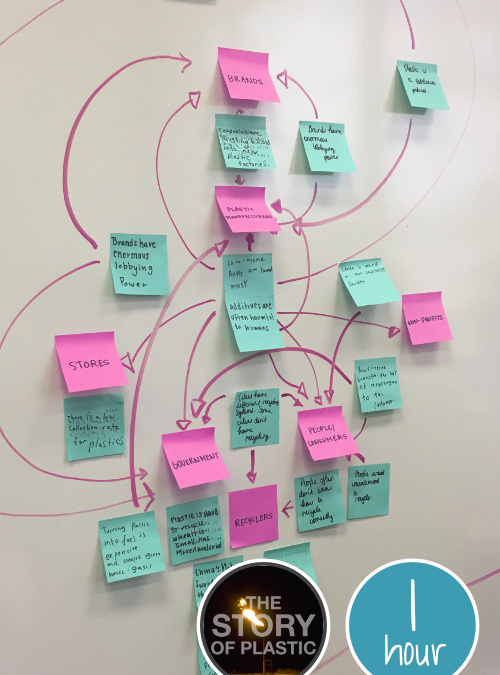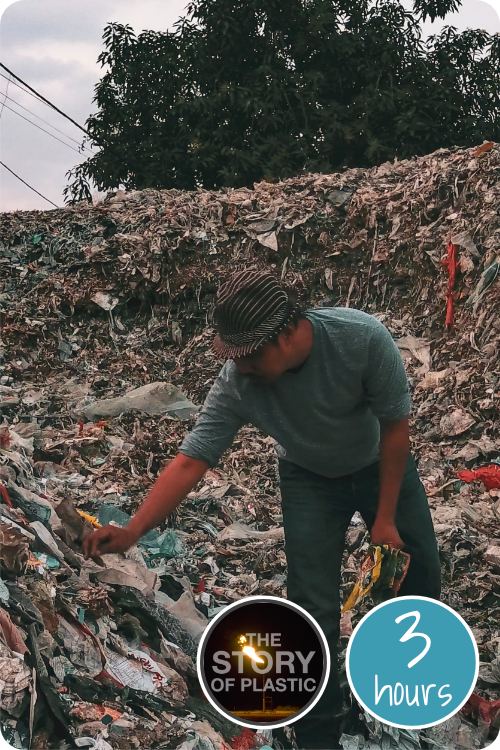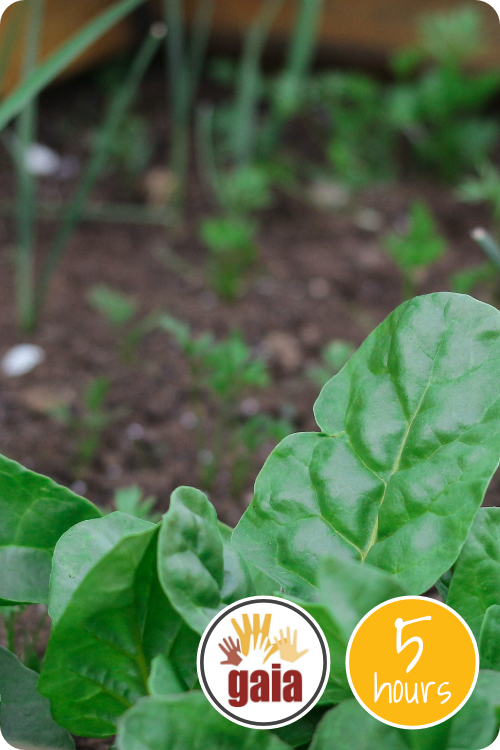
Photo credit: Algalita
Your mission
Learn about and map out how plastic influences our world: our choices, planet, health, and social systems.
Time Commitment: 1 Hour
Range of Impact: Community, Global
This Action is part of The Story of Plastic Classroom Experience Guide.
Why this Action is impactful
Plastic is so ingrained into our world and our lives that it can be very tricky to make sense of everything. Making a system map will help you understand all the different connections between plastics and the world we live in. It can also help with processing the connections between the people and stories in the film, The Story of Plastic.
What to know before getting started
System maps can be helpful for processing and understanding the complicated nature of our world. According to IDEO U, a system map is “lays out all the relationships and interactions between stakeholders in a given system.” Making a system map can help us realize important or “hidden” connections, opportunities for change, and obstacles that need to be overcome.
What to do
Using the words and phrases provided in the document linked below, create a system map that shows the relationships between plastics and people, as you perceive them.
Here’s how to make a system map:
You have a few options to get set up. First open the System Mapping Actors and Observations Google Doc, then use ONE of these 3 options:
Option 1. Print the page (on scratch paper if possible) and cut out the squares.
Option 2. Copy the words in each box to a separate sticky note or scrap piece of paper.
Option 3. Use a computer application with text boxes like Powerpoint, Google Slides, or Google Jamboard etc. to do the activity virtually. Copy the text from each box into a different text box.
To make your system map, arrange the actors and observations on a table, large piece of paper, or a whiteboard, in a way that makes sense to you. Use your prior knowledge, what you’ve learned through Wayfinder Society so far, and if you’ve watched it, what you learned from The Story of Plastic film. You can also include notes and lines to connect different parts, form map sections, etc.
Tips and suggestions
There isn’t just one “correct” system map. Everyone’s map will look different depending on their own understanding and perspective. This is one reason why system mapping can be helpful for understanding someone else’s perspective.
Take your time. Think about all the connections you saw in the film The Story of Plastic. Think about how each of the groups of people (Actor Terms in blue) positively or negatively influence each other. How do the Observation Statements (in yellow) correspond or connect to each of the groups?
If you get stuck, feel free to discuss with a friend or family member. Different perspectives can be helpful when working on critical thinking exercises.
Track your contribution
To submit your work and get recognized for your contribution to your community, complete the form below. If we approve your submission, you’ll be awarded 1 Hour.
Do another Action
Check out our other Actions that build off of this one!
The Story of Plastic - Watch the Film
Watch The Story of Plastic documentary and share your thoughts with us.
Systems Thinker Pathway Badge
This Action is part of the Systems Thinker Pathway Badge. Complete the Pathway to earn the Badge!
The Story of Plastic - Host a Screening
Host a virtual screening of The Story of Plastic documentary.
Design a Composting Network
Design a plan for your communities businesses to work together to compost more.





